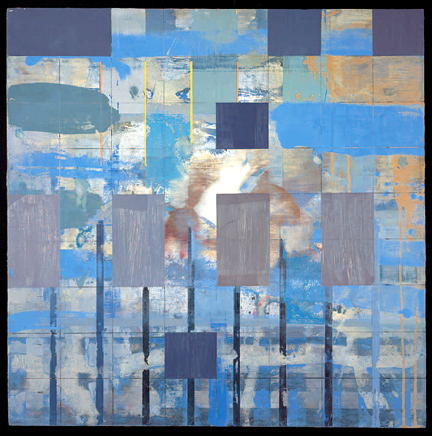Posted by Steve Durbin on July 15th, 2008
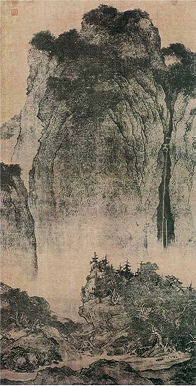 My ongoing look into Japanese and Chinese painting has turned up a few new/old ideas, and blown me away with some new discoveries. It’s becoming quite clear why I felt attracted to it; these are themes I’ve written on before in the context of my own photography (e.g. here and here).
My ongoing look into Japanese and Chinese painting has turned up a few new/old ideas, and blown me away with some new discoveries. It’s becoming quite clear why I felt attracted to it; these are themes I’ve written on before in the context of my own photography (e.g. here and here).
The first idea is about the level of abstraction frequently present. Many of those mountains and rivers seem as much about shapes and textures as about landscape, more evocative than representational. Sometimes there’s an interesting mix of broad abstraction and realistic detail, as in the thousand-year-old Travelers amid Mountains and Streams by Fan Kuan, shown at left.
A second realization is that, like similar works at different times, this one by Fan Kuan smacks of the sublime. This is evident in the language used to describe it by historian Patricia Ebrey (Cambridge Illustrated History of China, or Wikipedia):
Jutting boulders, tough scrub trees, a mule train on the road, and a temple in the forest on the cliff are all vividly depicted. There is a suitable break between the foreground and the towering central peak behind, which is treated as if it were a backdrop, suspended and fitted into a slot behind the foreground. There are human figures in this scene, but it is easy to imagine them overpowered by the magnitude and mystery of their surroundings.
more… »
Posted by Steve Durbin on May 13th, 2008
When I started my Patina project on weathered auto paint and rock surfaces, I originally had in mind flat surfaces with intriguing designs and colors. But rocks aren’t smooth, so I soon began photographing rocks with some three-dimensionality, playing with the ambiguity between tone and color as surface properties or caused by orientation to the light.
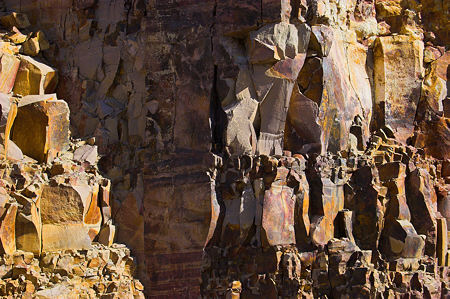
Last week, just back from photographing a favorite rock face, a number of ideas relating to that work seemed to be coming together. Unfortunately, working with the images (just a little) since then, the ideas have muddled themselves rather than resolving. Despite some enticing ingredients, the fine soup is still mostly in my imagination. Here’s what’s stirring in the pot:
more… »
Posted by Steve Durbin on May 5th, 2008
Often our lives are made more difficult by greater choice. In photography, the choice of color vs. monochrome was not necessarily easier in the past, but at least it had to be made by the time film was in the camera. With digital capture, you can change your mind at any time. Some photographers, as far as I can tell, use only color; a far smaller number are all about black and white. Some, like myself, dither. Not to complain, but this is a constant issue in ways it wouldn’t have been before. Reminded of it by both the previous post and recent experience, I here present the latest dithers. Prepare yourself: I’ll be asking for opinions…
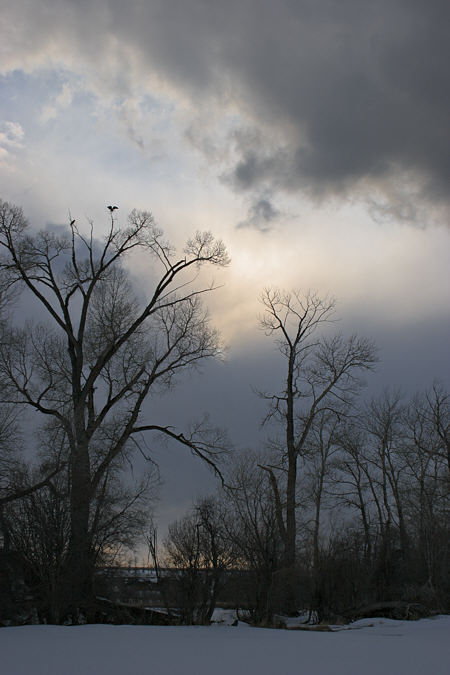
more… »
Posted by Steve Durbin on January 8th, 2008
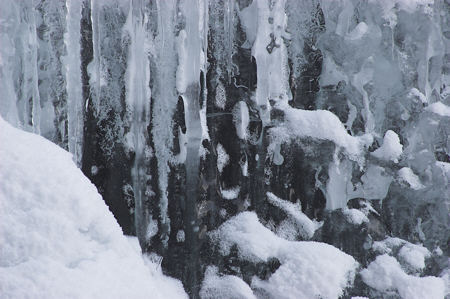
Posts from Sunil and from Jay have described their use of Photoshop manipulations. So I thought I’d show a bit of what happens — or could happen — to one of my images when I process it. To keep it simple, I’ll discuss a single photograph taken last weekend, a close view of a portion of frozen Lost Creek Falls in Yellowstone. Above is the “straight” version, i.e. how it looks when the simplest possible treatment with “no” adjustments is applied. The lighting from the partly blue sky gives it the bluish cast. My usual conversion to black and white, with contrast and brightness adjustment (“curves”) yields the result below. By “usual” I mean usual approach; the actual adjustments are different for each image.
more… »
Posted by June Underwood on December 7th, 2007
Jer and I are now at the Montana Artists’ Refuge, Basin, Montana, in the southwest part of the state. I am painting, he is writing and editing, and we are both experiencing the dislocation and joy of a new adventure.
While the residency has all kinds of ins-and-outs, basically I came here to paint. And painting is what I’ve been doing.
Basin lies in a geographical bowl, surrounded by pine-covered mountains. It’s a mining town — still has a functioning gold mine — and seems to have had its moments of prosperity, most of which were in the past.

Basin Street, Basin, Montana. The main drag.
more… »
Posted by Steve Durbin on November 19th, 2007
I’ve come across another UK artist whose art is informed by intriguing ideas, among them aural-visual synesthesia. Kevin Laycock, who teaches painting at the School of Design of the University of Leeds, is a musician himself, and very interested in the relationship of painting and design to music. To quote from a statement at the Drumcroon Gallery:
Kevin Laycock’s recent paintings explore the structure of ‘Colour Symphony’, an orchestral work created in 1922 by the composer Arthur Bliss. The composer, who was known for creating music with unusual combinations of instrument and voice, had set out to explore the musical associations of colour. In these paintings, Kevin Laycock is returning the musical score to the colour that inspired it, exploring the qualities of colour in music and paint, finding a painted equivalent for the musical structures and sounds.
more… »
Posted by June Underwood on November 9th, 2007
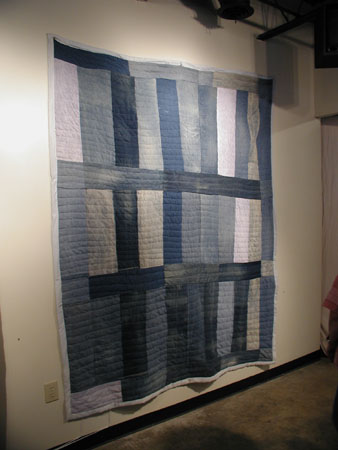
I’ve been following, if not commenting on, the discussions on blogs and their usefulness to a community of artists. And that led me to thinking about communities of artists.
All kinds of communities of artists have existed — ateliers of the Renaissance, –the academies of art — museum schools where students sat on the floor drawing ancient scuptures– the artists who rebelled against the academy in Paris– the Group of Seven took on Emily Carr in the late 1920’s — the New York School whose members drank together at bars, married, divorced, remarried each other– well you get the idea — art camps, colonies, ateliers, workshops, studio spaces, hanging with artists — all comprise community. And now we have the internet, adding another element to the possibility of community.
One of the most fascinating communities of artists is that of the black women of Gee’s Bend, Alabama, whose quilted art was exhibited in Houston and then at the Whitney in 2002. [Michael] Kimmelman in the New York Times November 29, 2002 regarded the exhibit as
“..Some of the most miraculous works of modern art America has produced. Imagine Matisse and Klee (if you think I’m wildly exaggerating, see the show) arising not from rarefied Europe, but from the caramel soil of the rural South in the form of women, descendants of slaves when Gee’s Bend was a plantation. These women, closely bound by family and custom (many Benders bear the slaveowner’s name, Pettway), spent their precious spare time — while not rearing children, chopping wood, hauling water and plowing fields — splicing scraps of old cloth to make robust objects of amazingly refined, eccentric abstract designs. The best of these designs, unusually minimalist and spare, are so eye-poppingly gorgeous that it’s hard to know how to begin to account for them. But then, good art can never be fully accounted for, just described.” (as quoted on the website of Shelly Zegart) more… »
 My ongoing look into Japanese and Chinese painting has turned up a few new/old ideas, and blown me away with some new discoveries. It’s becoming quite clear why I felt attracted to it; these are themes I’ve written on before in the context of my own photography (e.g. here and here).
My ongoing look into Japanese and Chinese painting has turned up a few new/old ideas, and blown me away with some new discoveries. It’s becoming quite clear why I felt attracted to it; these are themes I’ve written on before in the context of my own photography (e.g. here and here).



